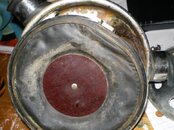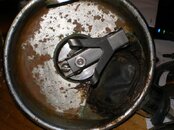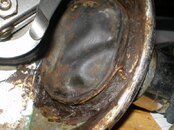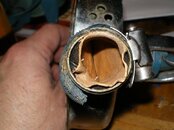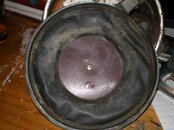This is def a reg for someone with restoration experience, not a beginner. Between the poor overall condition and the amount of cleaning it will require, it's not going to be easy. Like I said before, this one is best sold and the money used to buy a much easier regulator to restore or at least put it on the shelf until you have a dozen or so reg restorations under your belt before you tackle this one. Considering of all the DH reg types available to restore, this is both one of the harder and least performing regs once its done (properly). I try to help anyone new into the DH reg world and the worse thing I can think of to make them lose interest is to start with a difficult project that can not have a great outcome (the reg would not perform as well as many other regs the day it was sold much less with halfass home brew parts) and then try to dive it without the proper training. DH regs are different animals and you need someone to explain their nuances to you. Just slapping them on a modern BC and heading out is not going to go well.
If you are really interested in restoring and diving a DH reg, I encourage you to do so, it's a lot of fun and we have a great community of knowledgeable people who are more than willing to help you along. But to really enjoy the experience you need to have some success along the way. Learning the restoration process, how to properly setup these regs and the diving techniques required to properly dive and enjoy a DH reg will require the help of others. To me its one of the more enjoyable dry scuba related activities but starting with a dog regulator that is only a fair performer at it's best and trying to dive it without a knowledgeable mentor is not the best route. Find yourself a good Mistral, DA Aquamaster or even a Healthways Gold Label and start there, you will be much happier in the end. Later down the line if you want to tackle an original HWs you have the knowledge to do it properly and the support of a network of experienced restorers the help.
And as to the blue color, the early HW hoses were blue.



